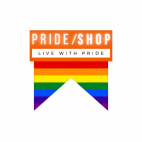Understanding the Harmful Impact of Pinkwashing on the LGBTQ+ Community
Pinkwashing has become a growing concern in discussions about LGBTQIA+ rights. It refers to the use of rainbow-colored branding or messaging to create a façade of inclusivity—without making any real effort to support the LGBTQ+ community.
While on the surface it may seem to raise awareness or promote tolerance, pinkwashing often causes more harm than good. These performative displays can normalize inequality, ignore real issues, and ultimately weaken the credibility of LGBTQ+ advocacy.
What Is Pinkwashing?
Pinkwashing describes the calculated use of LGBTQ+-friendly language, imagery, or events to cleanse the image of a corporation, government, or institution—usually without taking meaningful action to support LGBTQ+ rights.
- Companies may rebrand with rainbow logos during Pride Month, but fail to address systemic discrimination within their own organizations.
- Governments might publicly promote LGBTQ+ visibility, even while maintaining policies or laws that oppress queer individuals.
Ultimately, pinkwashing is about exploiting the LGBTQ+ movement for commercial or political advantage, rather than advancing justice and equity.
1. How Pinkwashing Normalizes Discrimination
One of the most dangerous effects of pinkwashing is how it downplays the existence of ongoing discrimination.
When a brand or state displays Pride colors, it can give the impression that societal acceptance has been achieved—
👉 But this illusion dilutes the urgency to address real challenges. It shifts focus away from issues like unequal healthcare access, workplace discrimination, or barriers to adoption and marriage. Rather than spotlighting these injustices, pinkwashing decorates them with temporary rainbow symbols.
2. Erasing the Real Struggles of the LGBTQ+ Community
Pinkwashing often detracts attention from grassroots activism and critical human rights issues.
- For example, many transgender individuals still face legal hurdles in having their gender identity recognized.
- In other regions, being LGBTQ+ remains criminalized. Yet, instead of highlighting these battles, media coverage often prioritizes corporate rainbow marketing.
👉 This shift overlooks essential demands like protection from hate crimes, equal legal rights, and freedom from persecution.
Reducing the LGBTQ+ experience to corporate-sponsored parades and merchandising sends a distorted message—it turns the fight for equality into a branding opportunity, rather than acknowledging it as a matter of human rights.
3. Undermining LGBTQ+ Movements and Advocacy

Pinkwashing also damages the integrity of LGBTQIA+ advocacy. When institutions adopt LGBTQ+ symbols purely for image management, it can blur the line between genuine support and manipulation.
- Activist demands begin to seem like tools for publicity rather than urgent calls for justice.
- This often leads to a growing distrust within the community, who struggle to distinguish authentic allies from opportunists.
👉 The result? A weakened activist ecosystem where grassroots voices are overshadowed by feel-good marketing campaigns.
4. Using LGBTQ+ Rights as a Political Distraction
Pinkwashing isn’t just a problem in the corporate world—it’s also a political strategy. Some governments highlight limited LGBTQ+ progress to distract from larger human rights violations.
For instance, a country may sponsor a queer film festival or host a Pride event, even as it silences critics, targets marginalized groups, or suppresses free speech.
👉 In these scenarios, LGBTQ+ visibility becomes a propaganda tool—a way to project modernity and openness internationally, while offering little or no actual benefit to the LGBTQ+ population.
How to Push Back Against Pinkwashing
You can take informed steps to counter the damaging effects of pinkwashing:
- Insist on accountability: Look for genuine commitments like inclusive hiring practices, donations to LGBTQ+ organizations, or advocacy for pro-equality laws.
- Support authentic allies: Choose to back brands and groups with a proven record of engaging with and uplifting LGBTQ+ communities.
- Educate others: Help spread the message that visibility alone isn’t enough—true allyship involves real structural change.
Conclusion
While pinkwashing may give the impression that society is becoming more inclusive, it often masks ongoing injustices that LGBTQ+ people still face daily. From erasing real issues to compromising the integrity of activism, it can quietly hinder the progress the community continues to fight for.
To ensure that the rainbow truly symbolizes freedom and equality—not exploitation—we must champion authentic advocacy over feel-good optics. It’s time to demand substance, not just symbols.

